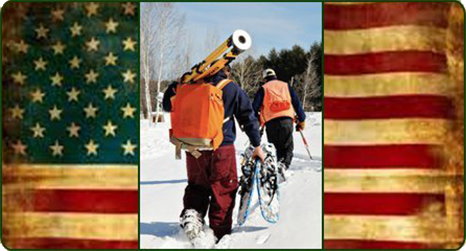
A proud veteran owned business
All of your land surveying needs will be completed by experienced staff when you call Pine Ridge Land Surveying. Enjoy accurate surveys at an affordable price.
Do I have to pay flood insurance?
If you live in or near a body of water, then you may be required to pay flood insurance under the National Flood Insurance Program. This requirement falls on those who have mortgaged a home or other significant structure or improvement lying within a Special Flood Hazard Area (SFHA). Flood insurers determine whether a lot is in this “flood zone” by referring to Flood Insurance Rate Maps (FIRMS). A FIRM may show a parcel of land lying in the flood zone; however, the elevation of a building may lie well above FEMA’s published base flood elevation (BFE).
Pine Ridge Land Surveying can assist you with two services.
- A Letter of Map Amendment (LOMA) application may be submitted to FEMA, and if FEMA determines that the buildings or structures are outside the flood hazard area, then they may issue a letter officially stating that they are not in the flood zone as shown on the FIRM. This also applies to a described portion of land.
- An Elevation Certificate form may be completed for the client to submit to the insurer, who may then use the elevation information to provide a better insurance rate.
About FEMA Flood Elevation Certificates
The Elevation Certificate is an important administrative tool of the National Flood Insurance Program (NFIP). It is to be used to provide elevation information necessary to ensure compliance with community floodplain management ordinances, to determine the proper insurance premium rate, and to support a request for a Letter of Map Amendment or Revision (LOMA or LOMR-F).
The Elevation Certificate is required in order to properly rate post-FIRM buildings, which are buildings constructed after publication of the Flood Insurance Rate Map (FIRM), for flood insurance Zones A1-A30, AE, AH, A (with BFE), VE, V1-V30, V (with BFE), AR, AR/A, AR/AE, AR/A1¬A30, AR/AH, and AR/AO. The Elevation Certificate is not required for pre-FIRM buildings unless the building is being rated under the optional post-FIRM flood insurance rules.
As part of the agreement for making flood insurance available in a community, the NFIP requires the community to adopt a floodplain management ordinance that specifies minimum requirements for reducing flood losses. One such requirement is that the community obtain the elevation of the lowest floor (including basement) of all new and substantially improved buildings, and maintain a record of such information. The Elevation Certificate provides a way for a community to comply with this requirement.
Use of this certificate does not provide a waiver of the flood insurance purchase requirement. Only a LOMA or LOMR-F from the Federal Emergency Management Agency (FEMA) can amend the FIRM and remove the Federal mandate for a lending institution to require the purchase of flood insurance. However, the lending institution has the option of requiring flood insurance even if a LOMA/LOMR-F has been issued by FEMA. The Elevation Certificate may be used to support a LOMA or LOMR-F request. Lowest floor and lowest adjacent grade elevations certified by a surveyor or engineer will be required if the certificate is used to support a LOMA or LOMR-F request.
This certificate is used only to certify building elevations. A separate certificate is required for floodproofing. Under the NFIP, non-residential buildings can be floodproofed up to or above the Base Flood Elevation (BFE). A floodproofed building is a building that has been designed and constructed to be watertight (substantially impermeable to floodwaters) below the BFE. Floodproofing of residential buildings is not permitted under the NFIP unless FEMA has granted the community an exception for residential floodproofed basements. The community must adopt standards for design and construction of floodproofed basements before FEMA will grant a basement exception. For both floodproofed nonresidential buildings and residential floodproofed basements in communities that have been granted an exception by FEMA, a floodproofing certificate is required.
The Elevation Certificate is to be completed by a land surveyor, engineer, or architect who is authorized by law to certify elevation information when elevation information is required for Zones A1-A30, AE, AH, A (with BFE), VE, V1-V30, V (with BFE), AR, AR/A, AR/AE, AR/A1-A30, AR/AH, or AR/AO. Community officials who are authorized by law or ordinance to provide floodplain management information may also complete this form. For Zones AO and A (without BFE), a community official, a property owner, or an owner’s representative may provide information on this certificate, unless the elevations are intended for use in supporting a LOMA or LOMR-F. Certified elevations must be included if the purpose of completing the Elevation Certificate is to obtain a LOMA or LOMR-F
Payment Options:
Cash, Check or Credit Card
